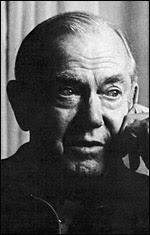
Pamela's Nite
Salad, Awesome HOMEMADE PASTA! Fantastic brownies, Spectacular lemon bars.
Nora's interest in doors continues strong.
"Low Key Legend" Seattle International Film Festival tribute to James Wong Howe:
Born Wong Tung Jim in Canton, China, Howe immigrated to America with his family when he was five, to Pasco, Washington to be exact. As a teenager he ventured south to Los Angeles with dreams of becoming a professional boxer. He turned instead, in 1917, to a career in motion pictures, and was first-cameraman within a few years.

He was an artist, and an incomparable one, but he brooked no self-display, no phony self-consciousness. Although sufficiently enamored of low-key lighting to earn the industry nickname "Low Key Howe," he believed that the camerawork should serve the reality of the imaginative situation called up by the story. He strove to avoid "movie lighting," and hated having to deploy shadows all over the place in The Thin Man. Director Woody Van Dyke thought that the more shadows, the more the audience would recognize it was a mystery movie. Howe thought that the more shadows, the more you knew the setup was artificial, a movie scene, not a real room with a logical, dominant light source--or a canyon wall lit only by the sun. (But he gave great shadow in The Thin Man. It was his job.)

He could shoot anything and get it right. He played around with zoom lenses thirty years before the rest of Hollywood became aware of them. Once, back in the pre-panchromatic silents, Howe figured out that a certain vacant-eyed actress would register better on film if he draped a black cloth behind his camera; the black reflected on the retinas of her pale gray eyes – and made her career, and his. You never knew what would work. Getting set to shoot a scene in a Western clearing (in Martin Ritt's Rashomon adaptation, The Outrage), he saw that some rocks were going to throw off sun glare and distract from the actors. Howe pulled out a handy spray can of black paint (always kept a can of black paint in his box), and the rocks didn't glare anymore.

Howe's granddaughter remembers via MovieMaker Magazine:
For young Wong Tung Jim, those early years in America were not happy ones. He was a constant subject of ridicule because of his Chinese heritage. Jimmie would take candy from his father's store to bribe the neighborhood children into playing with him. Prejudice would follow him throughout his life and career; although, ironically, his ethnicity distinguished him from other cinematographers and played a role in making him one of the best-known practitioners of his craft in the world.James Wong Howe was around 12 years old when he bought a little Brownie camera in a drugstore. He took pictures of his brothers and sisters, even though his father was an old-fashioned Chinese who was superstitious about having his photo taken. When he had the film developed, their heads were missing! This wasn't because of some angry spirit lurking nearby, but due to the fact that his camera had no viewfinder. Just the same, Jimmie's father was very displeased with the results, to say the least.
Several years passed, and Jimmie left for Oregon to take up boxing. This had no lasting appeal for him. Eventually he became a delivery boy for a commercial photographer in Los Angeles, but was dismissed when he helped a friend who was going back to China by doing some passport photos in the firm's laboratory.
Jimmie next took a job as a busboy at the Beverly Hills Hotel. On Sundays he would go to Chinatown to watch a comedy being shot. He spoke to the cameraman, who suggested to Jimmie that he try working in the movies. Shortly thereafter, Jimmie went to the Jesse Lasky Studios, but the man in charge of photography told him that he was too small and frail to carry the equipment. Instead he hired Jimmie to pick up scraps of nitrate stock from the cutting-room floor for 10 dollars a week. In his spare moments, he became familiar with the hand-cranked cameras, the lighting equipment and the film-laboratory processes.

Jimmie's break came in 1919 on the Cecile B. DeMille film Male and Female. The crew was shooting a scene in which Gloria Swanson was to be attacked by a toothless lion. The sequence required multiple cameras, and there were not enough assistants. Jimmie was called from the camera room and given the slate. He was dubbed the fourth assistant cameraman. Before long, Jimmie endeared himself to DeMille. The legendary director had encountered a major production problem: he needed a close-up of a canary singing, and the crew tried everything to get the bird to sing, but to no avail. Jimmie asked if he could try. He took a piece of chewing gum and lodged it in the canary's beak. The bird moved its beak in an attempt to dislodge the gum, and on silent film it looked like it was singing. DeMille was impressed and raised Jimmie's salary to 15 dollars a week.








